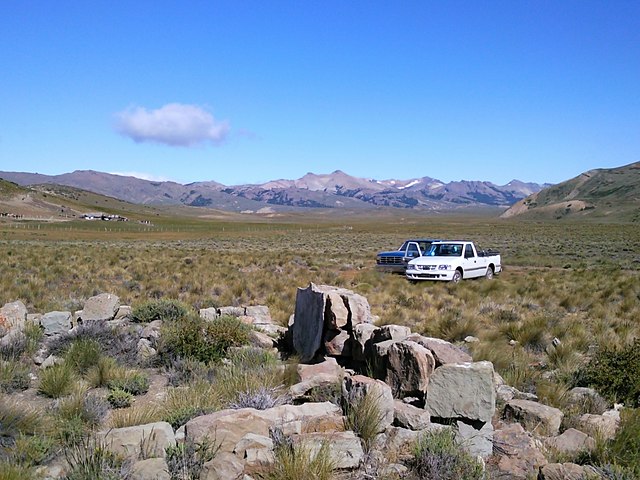Río Negro is the main river of Patagonia in terms of the size of its drainage basin, its associated agricultural produce and population living at its shores. In eastern Patagonia it is also the largest by flow rate. The river flows through the Argentine province of Río Negro which is named after it. Its name comes from the literal translation of the Mapuche term Curu Leuvu, although the water is more green than black. Formerly, it was also known as "river of the willows" because of the big number of weeping willows that grow along the bank. It is 635 km in length.
Rio Negro near the mouth, seen from its northern bank, between the cities of Viedma, Río Negro and Carmen de Patagones, Buenos Aires
Spectacular meander scars, oxbow lakes and abandoned meanders in the broad flood plain of the Río Negro near Colonia Josefa. 2010 photo from ISS
Patagonia is a geographical region that encompasses the southern end of South America, governed by Argentina and Chile. The region comprises the southern section of the Andes Mountains with lakes, fjords, temperate rainforests, and glaciers in the west and deserts, tablelands, and steppes to the east. Patagonia is bounded by the Pacific Ocean on the west, the Atlantic Ocean to the east, and many bodies of water that connect them, such as the Strait of Magellan, the Beagle Channel, and the Drake Passage to the south.
Río Negro Province, Argentina
Ainsworth Bay and Marinelli Glacier, Chile
View of Punta Arenas, Chile, in winter
Santa Cruz Province






